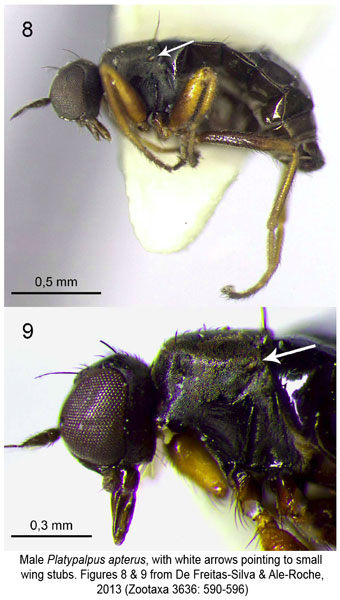Stop me if you’ve heard this one, but what do you call a wingless fly? Apterous of course!
Proving once and for all that taxonomists do indeed have a sense of humour, meet Platypalpus apterus De Freitas & Ale-Rocha.
Winglessness has independently evolved more than a hundred times across the order Diptera, but as this dance fly (Hybotidae) illustrates, the results are anything but pedestrian. Like its fully-winged relatives, Platypalpus apterus is an active hunter, only in this case scouring beneath the bark of Polylepis trees for earthbound arthropods unable to escape its piercing beak.
Considering Platypalpus apterus‘ inability to fly, it’s poetic that it was collected high above the clouds in the Andean paramo of Ecuador, in an area that is as beautiful as it is barren. In fact, aptery is incredibly common at high altitudes, with many different fly families exhibiting high levels of wingless diversity on mountainous islands set amongst the sky. There are several theories on why it may be advantageous for flies to forego their wings, including as a defense against strong winds capable of carrying individuals away and colder, cloudier conditions at altitude impacting the flies’ ability to warm up their flight muscles.
——————-
Nominate this species for New Species of the Year!
De Freitas-Silva R.A.P. & Ale-Rocha R. (2013). A new apterous species of Platypalpus Macquart (Diptera: Hybotidae, Tachydromiinae) from Ecuador, Zootaxa, 3636 (4) 590-596. DOI: http://dx.doi.org/10.11646%2Fzootaxa.3636.4.6


One Response to “To Know A Fly – Platypalpus apterus”